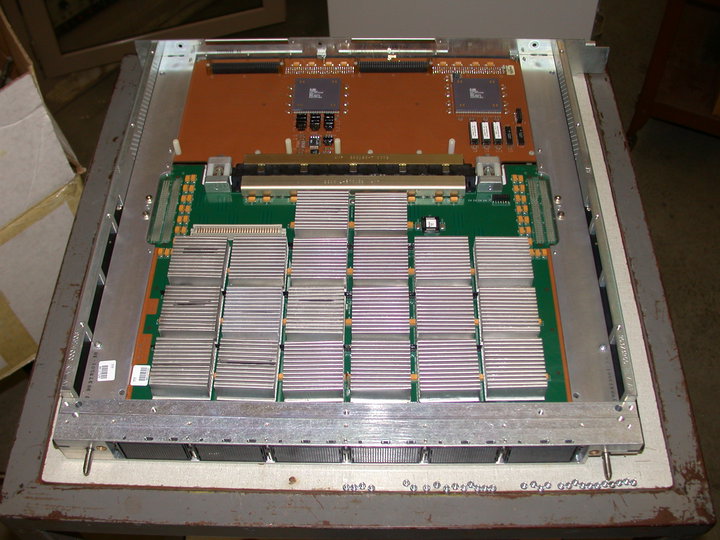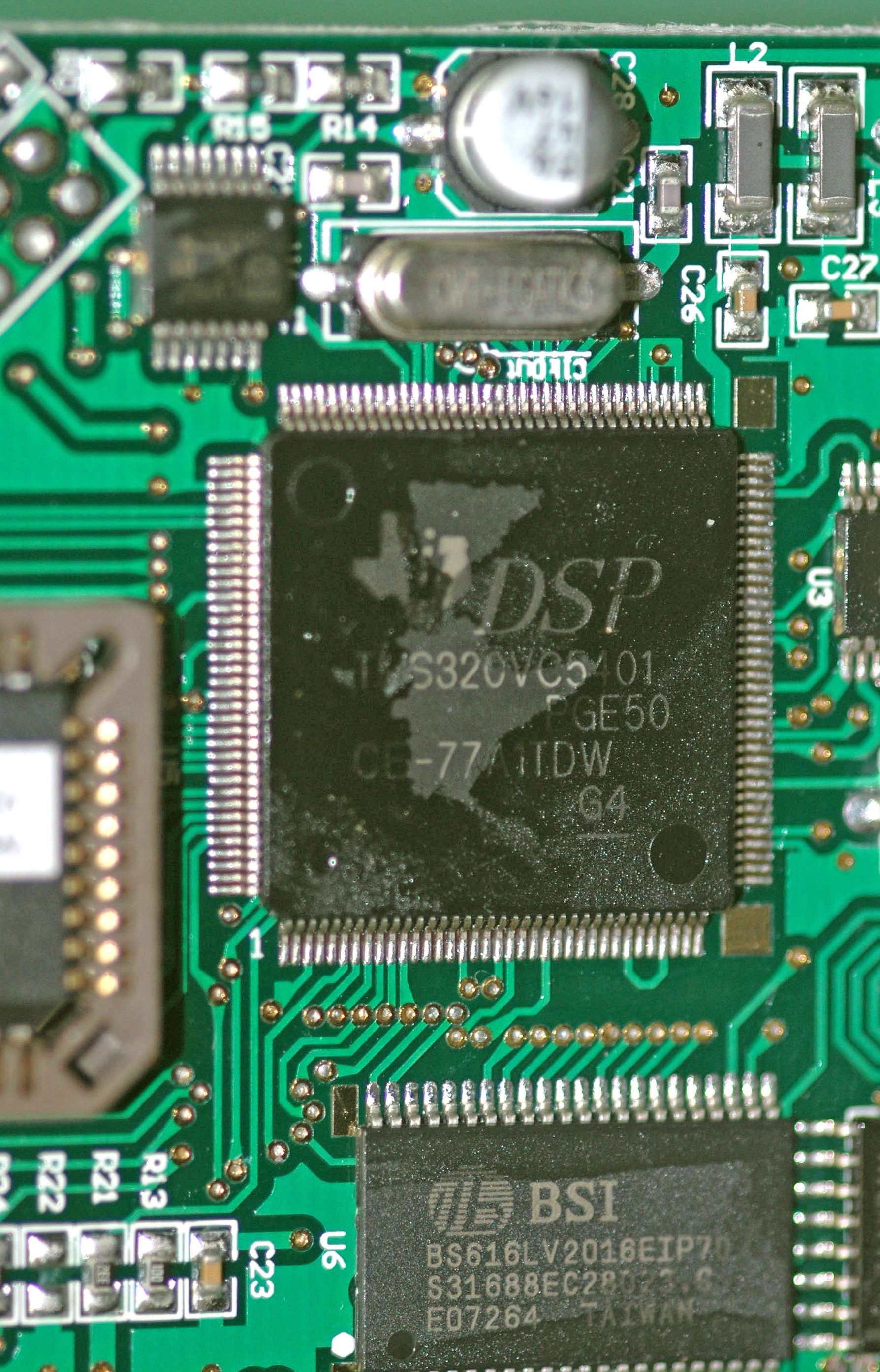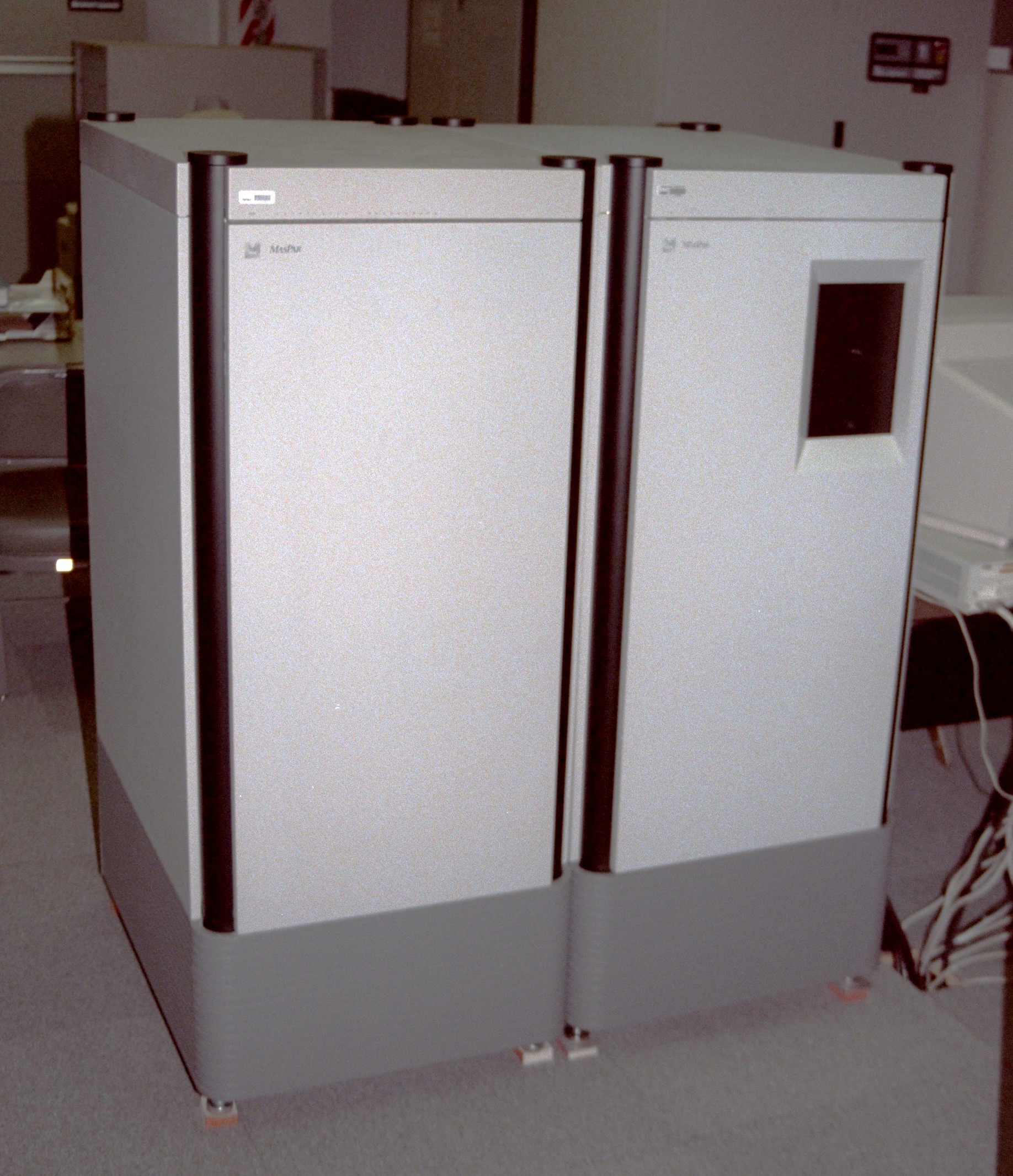|
SWAR
SIMD within a register (SWAR), also known by the name "packed SIMD" is a technique for performing parallel operations on data contained in a processor register. SIMD stands for ''single instruction, multiple data''. Flynn's 1972 taxonomy categorises SWAR as "pipelined processing". Many modern general-purpose computer processors have some provisions for SIMD, in the form of a group of registers and instructions to make use of them. SWAR refers to the use of those registers and instructions, as opposed to using specialized processing engines designed to be better at SIMD operations. It also refers to the use of SIMD with general-purpose registers and instructions that were not meant to do it at the time, by way of various novel software tricks. SWAR architectures A SWAR architecture is one that includes instructions explicitly intended to perform parallel operations across data that is stored in the independent subwords or fields of a register. A SWAR-capable architecture is one ... [...More Info...] [...Related Items...] OR: [Wikipedia] [Google] [Baidu] |
SIMD
Single instruction, multiple data (SIMD) is a type of parallel processing in Flynn's taxonomy. SIMD can be internal (part of the hardware design) and it can be directly accessible through an instruction set architecture (ISA), but it should not be confused with an ISA. SIMD describes computers with multiple processing elements that perform the same operation on multiple data points simultaneously. Such machines exploit data level parallelism, but not concurrency: there are simultaneous (parallel) computations, but each unit performs the exact same instruction at any given moment (just with different data). SIMD is particularly applicable to common tasks such as adjusting the contrast in a digital image or adjusting the volume of digital audio. Most modern CPU designs include SIMD instructions to improve the performance of multimedia use. SIMD has three different subcategories in Flynn's 1972 Taxonomy, one of which is SIMT. SIMT should not be confused with software thr ... [...More Info...] [...Related Items...] OR: [Wikipedia] [Google] [Baidu] |
Flynn's Taxonomy
Flynn's taxonomy is a classification of computer architectures, proposed by Michael J. Flynn in 1966 and extended in 1972. The classification system has stuck, and it has been used as a tool in design of modern processors and their functionalities. Since the rise of multiprocessing central processing units (CPUs), a multiprogramming context has evolved as an extension of the classification system. Vector processing, covered by Duncan's taxonomy, is missing from Flynn's work because the Cray-1 was released in 1977: Flynn's second paper was published in 1972. Classifications The four initial classifications defined by Flynn are based upon the number of concurrent instruction (or control) streams and data streams available in the architecture. Flynn later defined three additional sub-categories of SIMD in 1972. Single instruction stream, single data stream (SISD) A sequential computer which exploits no parallelism in either the instruction or data streams. Single control unit ... [...More Info...] [...Related Items...] OR: [Wikipedia] [Google] [Baidu] |
Array Processor
In computing, a vector processor or array processor is a central processing unit (CPU) that implements an instruction set where its instructions are designed to operate efficiently and effectively on large one-dimensional arrays of data called ''vectors''. This is in contrast to scalar processors, whose instructions operate on single data items only, and in contrast to some of those same scalar processors having additional single instruction, multiple data (SIMD) or SWAR Arithmetic Units. Vector processors can greatly improve performance on certain workloads, notably numerical simulation and similar tasks. Vector processing techniques also operate in video-game console hardware and in graphics accelerators. Vector machines appeared in the early 1970s and dominated supercomputer design through the 1970s into the 1990s, notably the various Cray platforms. The rapid fall in the price-to-performance ratio of conventional microprocessor designs led to a decline in vector superco ... [...More Info...] [...Related Items...] OR: [Wikipedia] [Google] [Baidu] |
Stream Processing
In computer science, stream processing (also known as event stream processing, data stream processing, or distributed stream processing) is a programming paradigm which views data streams, or sequences of events in time, as the central input and output objects of computation. Stream processing encompasses dataflow programming, reactive programming, and distributed data processing. Stream processing systems aim to expose parallel processing for data streams and rely on streaming algorithms for efficient implementation. The software stack for these systems includes components such as programming models and query languages, for expressing computation; stream management systems, for distribution and scheduling; and hardware components for acceleration including floating-point units, graphics processing units, and field-programmable gate arrays. The stream processing paradigm simplifies parallel software and hardware by restricting the parallel computation that can be performed. ... [...More Info...] [...Related Items...] OR: [Wikipedia] [Google] [Baidu] |
Processor Register
A processor register is a quickly accessible location available to a computer's processor. Registers usually consist of a small amount of fast storage, although some registers have specific hardware functions, and may be read-only or write-only. In computer architecture, registers are typically addressed by mechanisms other than main memory, but may in some cases be assigned a memory address e.g. DEC PDP-10, ICT 1900. Almost all computers, whether load/store architecture or not, load data from a larger memory into registers where it is used for arithmetic operations and is manipulated or tested by machine instructions. Manipulated data is then often stored back to main memory, either by the same instruction or by a subsequent one. Modern processors use either static or dynamic RAM as main memory, with the latter usually accessed via one or more cache levels. Processor registers are normally at the top of the memory hierarchy, and provide the fastest way to access data ... [...More Info...] [...Related Items...] OR: [Wikipedia] [Google] [Baidu] |
SSE3
SSE3, Streaming SIMD Extensions 3, also known by its Intel code name Prescott New Instructions (PNI), is the third iteration of the SSE instruction set for the IA-32 (x86) architecture. Intel introduced SSE3 in early 2004 with the Prescott revision of their Pentium 4 CPU. In April 2005, AMD introduced a subset of SSE3 in revision E (Venice and San Diego) of their Athlon 64 CPUs. The earlier SIMD instruction sets on the x86 platform, from oldest to newest, are MMX, 3DNow! (developed by AMD, but not supported by Intel processors), SSE, and SSE2. SSE3 contains 13 new instructions over SSE2. Changes The most notable change is the capability to work horizontally in a register, as opposed to the more or less strictly vertical operation of all previous SSE instructions. More specifically, instructions to add and subtract the multiple values stored within a single register have been added. These instructions can be used to speed up the implementation of a number of DSP and ... [...More Info...] [...Related Items...] OR: [Wikipedia] [Google] [Baidu] |
SSE2
SSE2 (Streaming SIMD Extensions 2) is one of the Intel SIMD (Single Instruction, Multiple Data) processor supplementary instruction sets first introduced by Intel with the initial version of the Pentium 4 in 2000. It extends the earlier SSE instruction set, and is intended to fully replace MMX. Intel extended SSE2 to create SSE3 in 2004. SSE2 added 144 new instructions to SSE, which has 70 instructions. Competing chip-maker AMD added support for SSE2 with the introduction of their Opteron and Athlon 64 ranges of AMD64 64-bit CPUs in 2003. Features Most of the SSE2 instructions implement the integer vector operations also found in MMX. Instead of the MMX registers they use the XMM registers, which are wider and allow for significant performance improvements in specialized applications. Another advantage of replacing MMX with SSE2 is avoiding the mode switching penalty for issuing x87 instructions present in MMX because it is sharing register space with the x87 FPU. The SSE2 als ... [...More Info...] [...Related Items...] OR: [Wikipedia] [Google] [Baidu] |
Streaming SIMD Extensions
In computing, Streaming SIMD Extensions (SSE) is a single instruction, multiple data (SIMD) instruction set extension to the x86 architecture, designed by Intel and introduced in 1999 in their Pentium III series of Central processing units (CPUs) shortly after the appearance of Advanced Micro Devices (AMD's) 3DNow!. SSE contains 70 new instructions (65 unique mnemonics using 70 encodings), most of which work on single precision floating-point data. SIMD instructions can greatly increase performance when exactly the same operations are to be performed on multiple data objects. Typical applications are digital signal processing and graphics processing. Intel's first IA-32 SIMD effort was the MMX instruction set. MMX had two main problems: it re-used existing x87 floating-point registers making the CPUs unable to work on both floating-point and SIMD data at the same time, and it only worked on integers. SSE floating-point instructions operate on a new independent register set, the ... [...More Info...] [...Related Items...] OR: [Wikipedia] [Google] [Baidu] |
3DNow!
3DNow! is a deprecated extension to the x86 instruction set developed by Advanced Micro Devices (AMD). It adds single instruction multiple data (SIMD) instructions to the base x86 instruction set, enabling it to perform vector processing of floating-point vector-operations using Vector registers, which improves the performance of many graphic-intensive applications. The first microprocessor to implement 3DNow was the AMD K6-2, which was introduced in 1998. When the application was appropriate, this raised the speed by about 2–4 times. However, the instruction set never gained much popularity, and AMD announced on August 2010 that support for 3DNow would be dropped in future AMD processors, except for two instructions (the PREFETCH and PREFETCHW instructions). The two instructions are also available in Bay-Trail Intel processors. History 3DNow was developed at a time when 3D graphics were becoming mainstream in PC multimedia and games. Realtime display of 3D graphics depen ... [...More Info...] [...Related Items...] OR: [Wikipedia] [Google] [Baidu] |
Digital Signal Processor
A digital signal processor (DSP) is a specialized microprocessor chip, with its architecture optimized for the operational needs of digital signal processing. DSPs are fabricated on MOS integrated circuit chips. They are widely used in audio signal processing, telecommunications, digital image processing, radar, sonar and speech recognition systems, and in common consumer electronic devices such as mobile phones, disk drives and high-definition television (HDTV) products. The goal of a DSP is usually to measure, filter or compress continuous real-world analog signals. Most general-purpose microprocessors can also execute digital signal processing algorithms successfully, but may not be able to keep up with such processing continuously in real-time. Also, dedicated DSPs usually have better power efficiency, thus they are more suitable in portable devices such as mobile phones because of power consumption constraints. DSPs often use special memory architectures that ... [...More Info...] [...Related Items...] OR: [Wikipedia] [Google] [Baidu] |
MasPar
MasPar Computer Corporation was a minisupercomputer vendor that was founded in 1987 by Jeff Kalb. The company was based in Sunnyvale, California. History While Kalb was the vice-president of the division of Digital Equipment Corporation (DEC) that built integrated circuits, some researchers in that division were building a supercomputer based on the Goodyear MPP (massively parallel processor) supercomputer. The DEC researchers enhanced the architecture by: * making the processor elements to be 4-bit instead of 1-bit John Culver"MasPar: Massively Parallel Computers – 32 cores on a chip" * increasing the connectivity of each processor element to 8 neighbors from 4. * adding a global interconnect for all of the processing elements, which was a triple-redundant switch which was easier to implement than a full crossbar switch. After Digital decided not to commercialize the research project, Kalb decided to start a company to sell this minisupercomputer. In 1990, the first generat ... [...More Info...] [...Related Items...] OR: [Wikipedia] [Google] [Baidu] |


